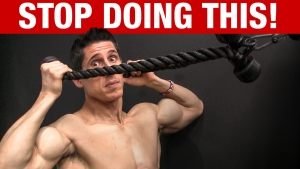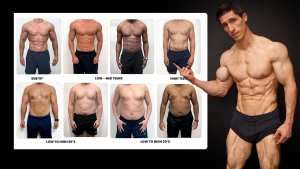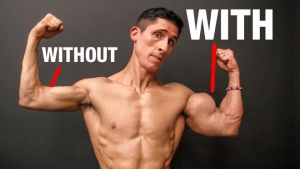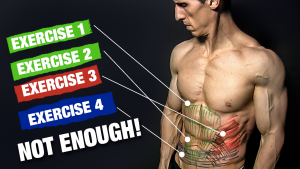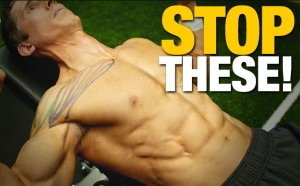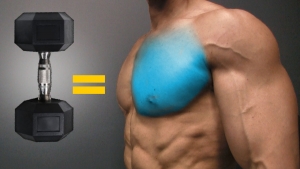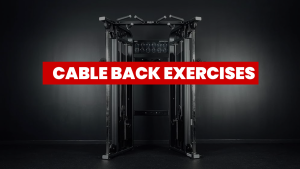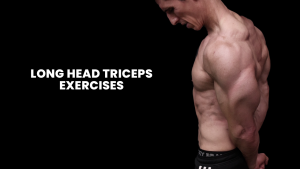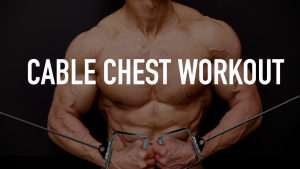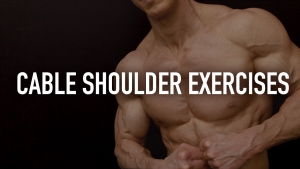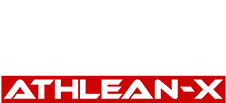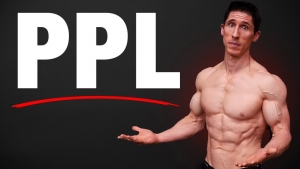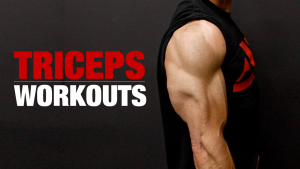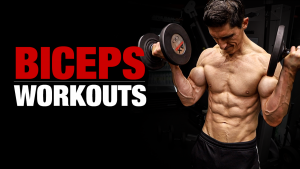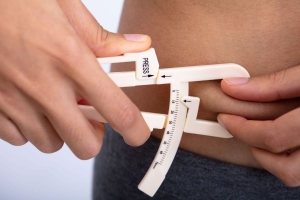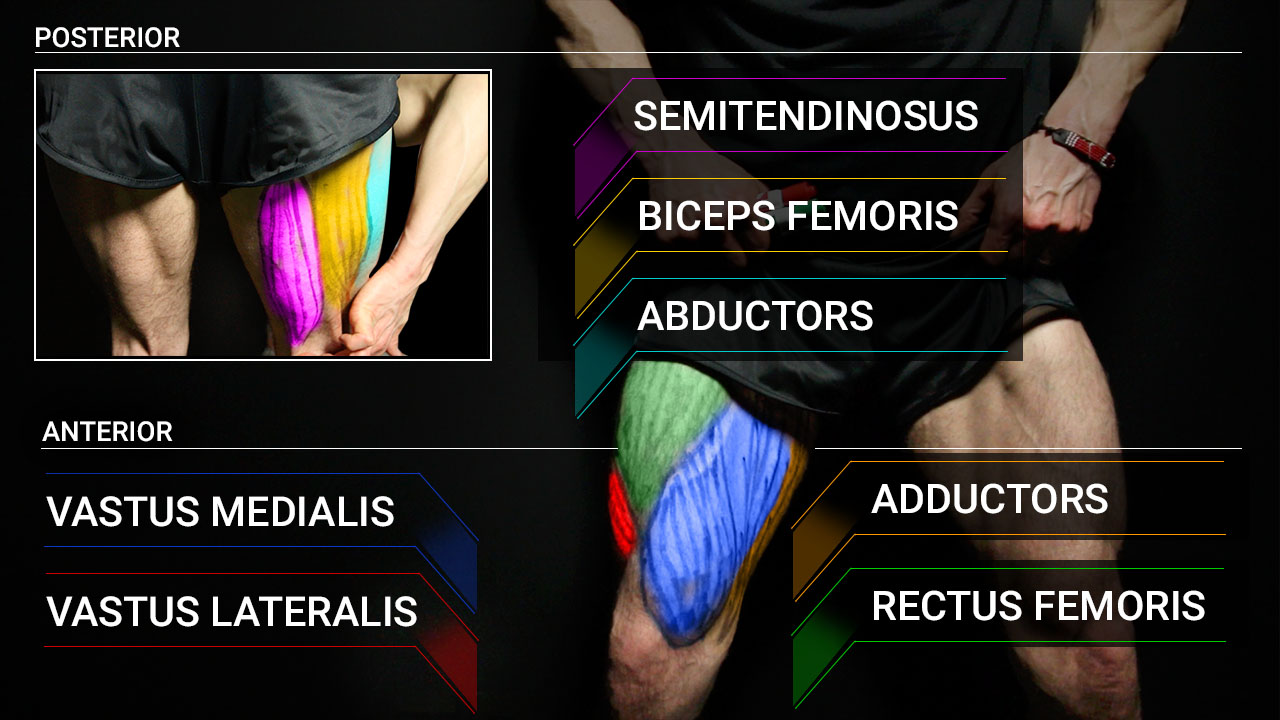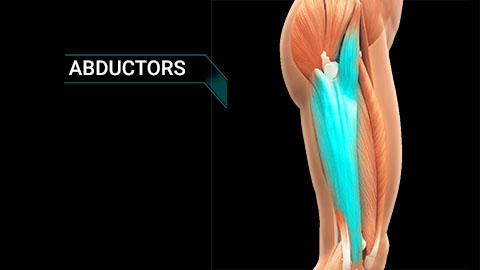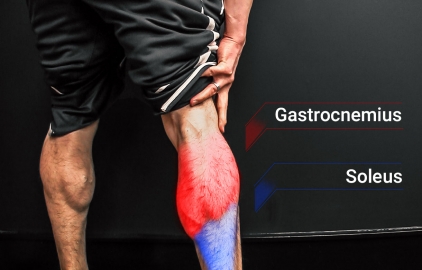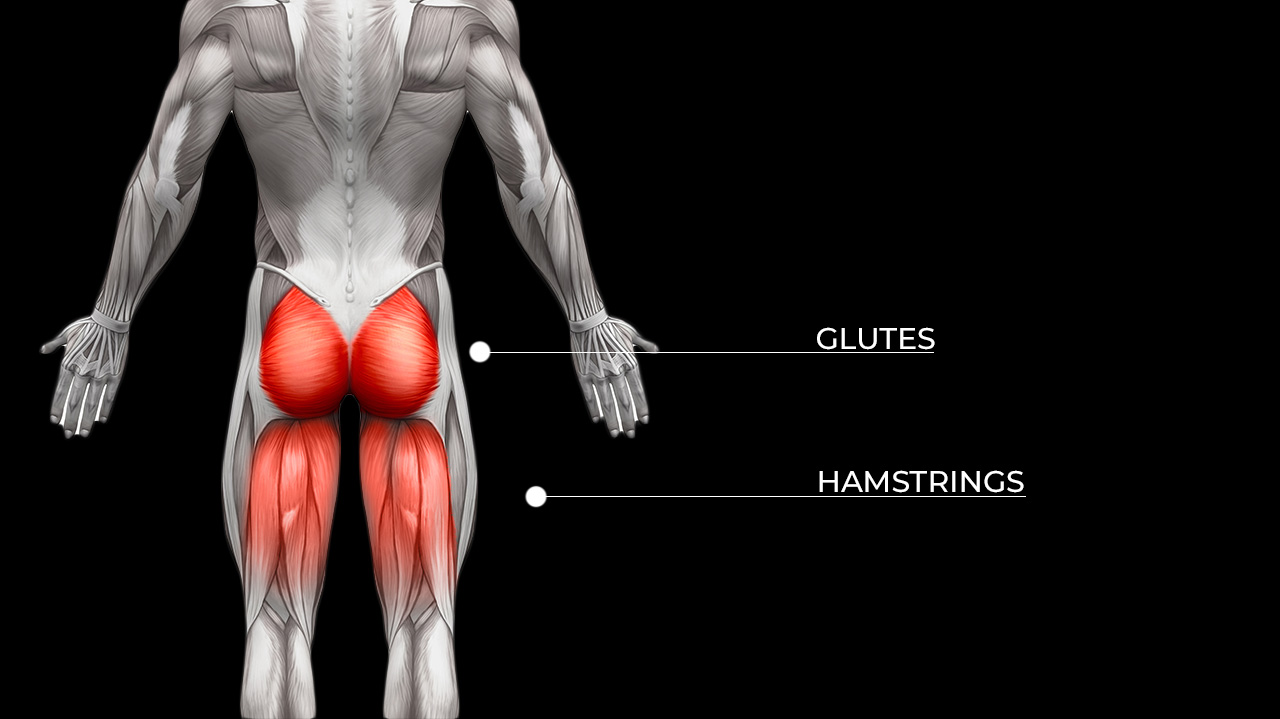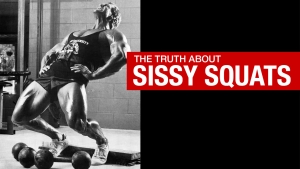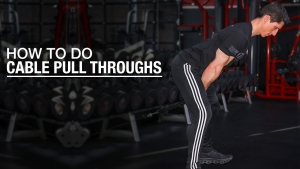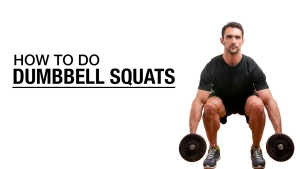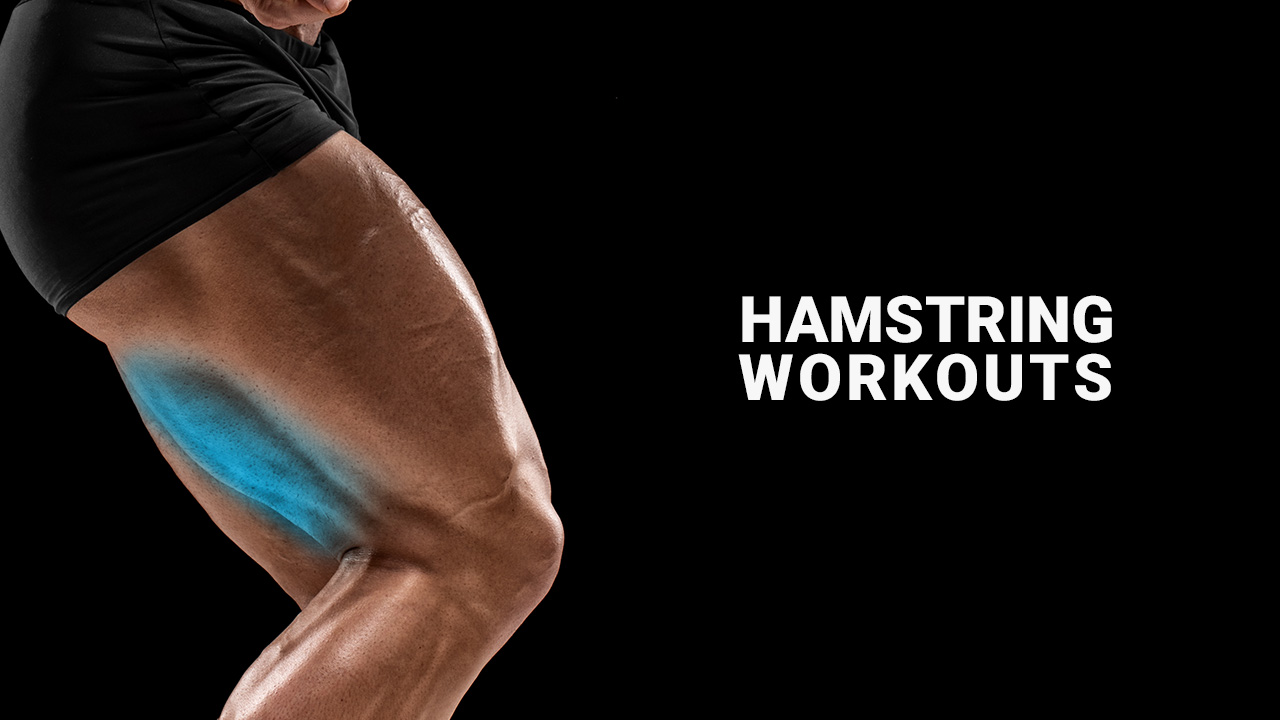
THE ULTIMATE HAMSTRINGS WORKOUT GUIDE
Guys, I want you to take a look at your hamstrings workouts and tell me what you see.
If you’re like most people, the bulk of your hamstrings workout is going to feature hamstring curls or leg curls as the primary exercise in the workout.
If you find a workout like this or are currently following one, I want you to throw it away because I have a much better option for you!
In this article, I’m going to provide you with a hamstrings workout that will build serious strength as well as help with injury prevention.
But first, I want to breakdown the anatomy of the hamstrings, then discuss the true function of the hamstrings and why the hamstring exercises you’re doing right now might be increasing your risk of injury.
Here’s a breakdown of what you’ll get in this complete guide to hamstring workouts:
1) LEG MUSCLE ANATOMY
There are several important muscle groups in the legs, such as the quads, hamstrings, adductors and abductors. These can be targeted with leg workouts done at the gym or even at home.
With my trusty Muscle Markers, I’ll help you understand the anatomy of the leg muscles.
THE HAMSTRINGS
While the quadriceps are a bigger muscle group, I want to start with the posterior chain and the main focus of this article: the hamstring muscles.
Flip to the back of your legs, and that’s where you’ll find the hamstrings. These lower body muscles are important for a balanced physique. The hamstrings have two main sections:
BICEPS FEMORIS

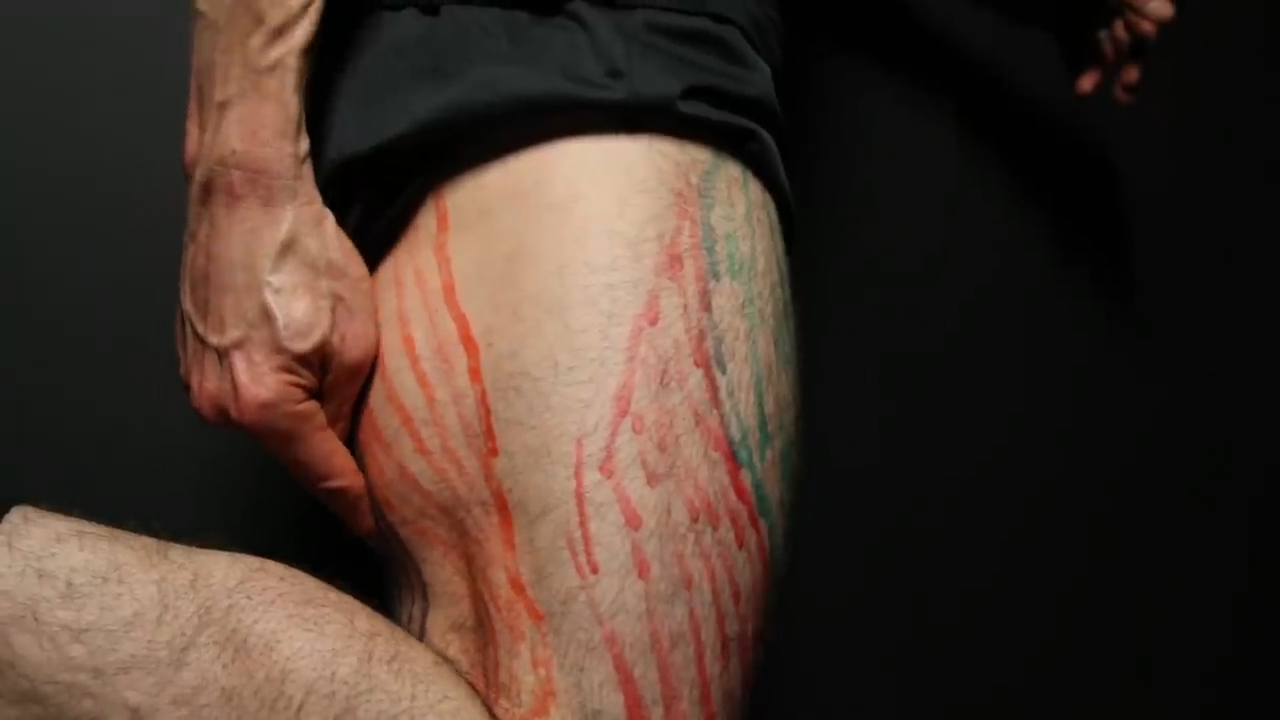
The first of the posterior chain muscles is the hamstring’s long head. This is located on the outside of your leg, starting at your hip joint, and ending just below your knee joint.
SEMITENDINOSUS

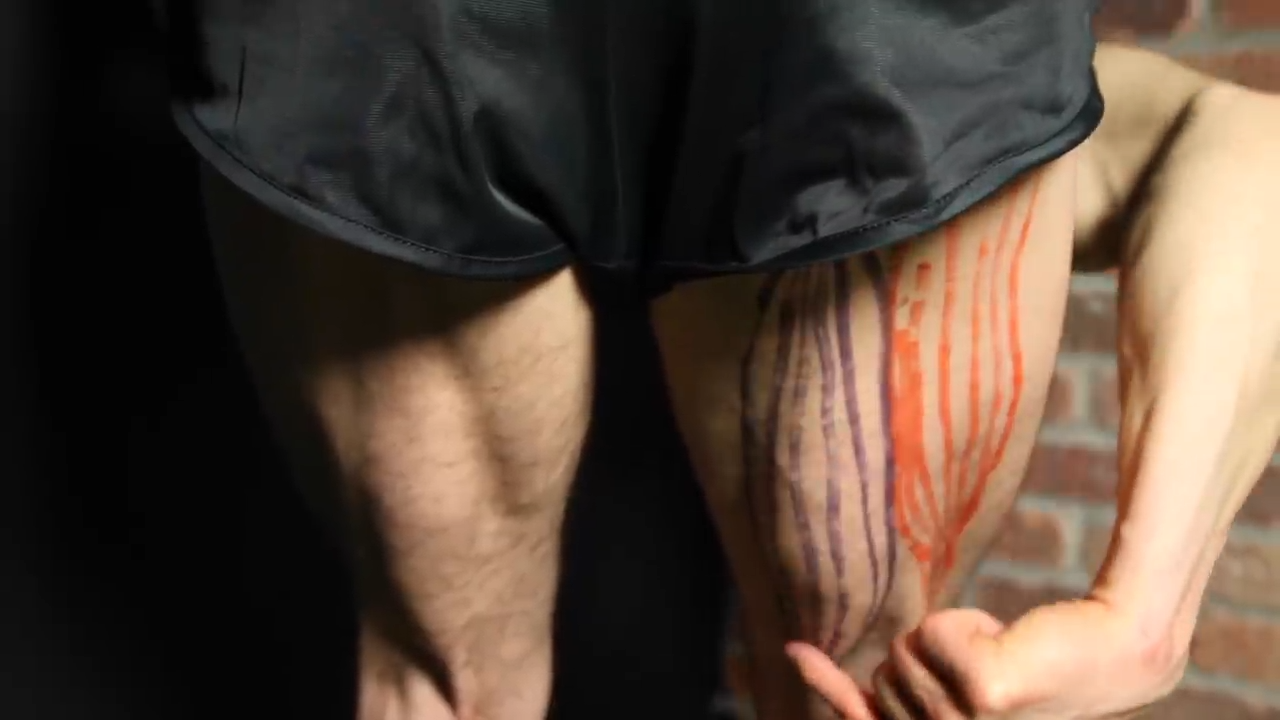
This is located in the center of your hamstring, between the biceps femoris and gracilis muscles.
Most people know that the hamstring muscles are responsible for knee flexion or bending your leg at the knee and hip, but this is when you are in a seated or crouching position.
What you might not know is that the hamstrings are also responsible for extending the knee when you’re in a standing position. Knowing this one fact will help you train smarter.
THE QUADRICEPS
Think of the quadriceps muscle as the “upper body” of the legs as it gets the most attention since it has four heads or sections:
VASTUS MEDIALIS

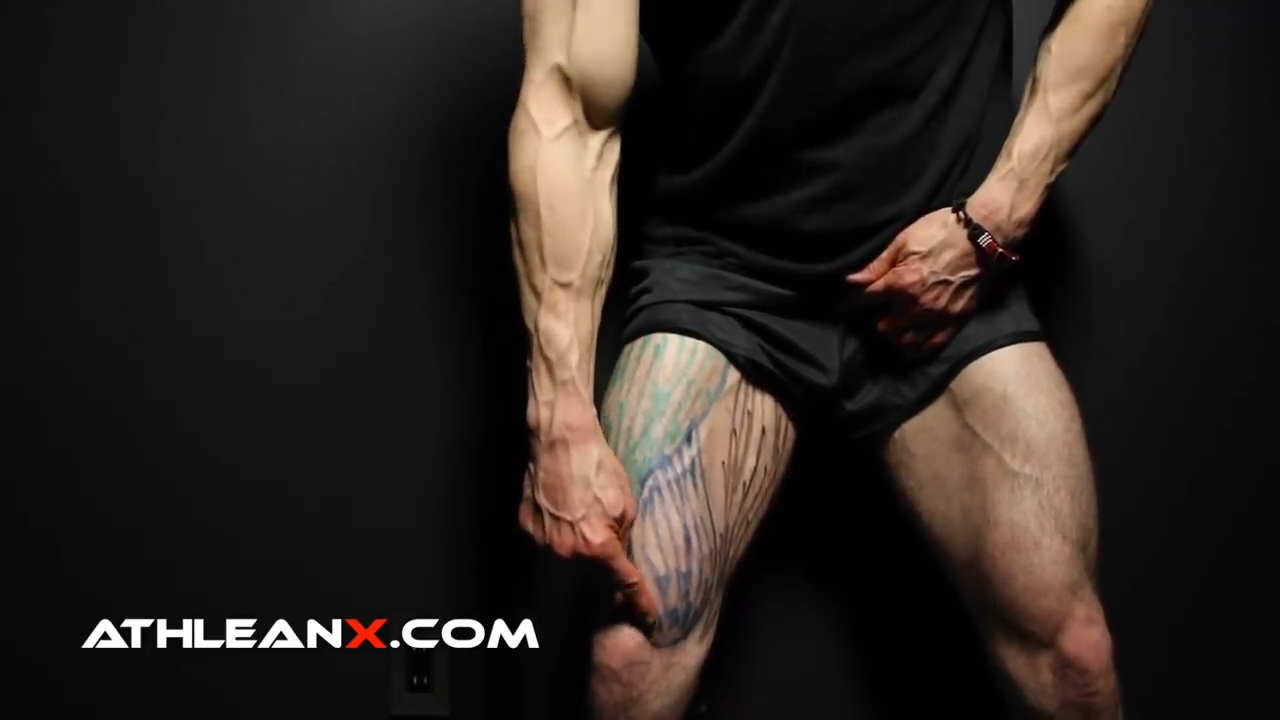
This is the quadriceps’ strong head. It’s located on the inner part of your thigh, running from just below your hip joint to just above your knee. Its main job is to support knee extension.
VASTUS INTERMEDIUS

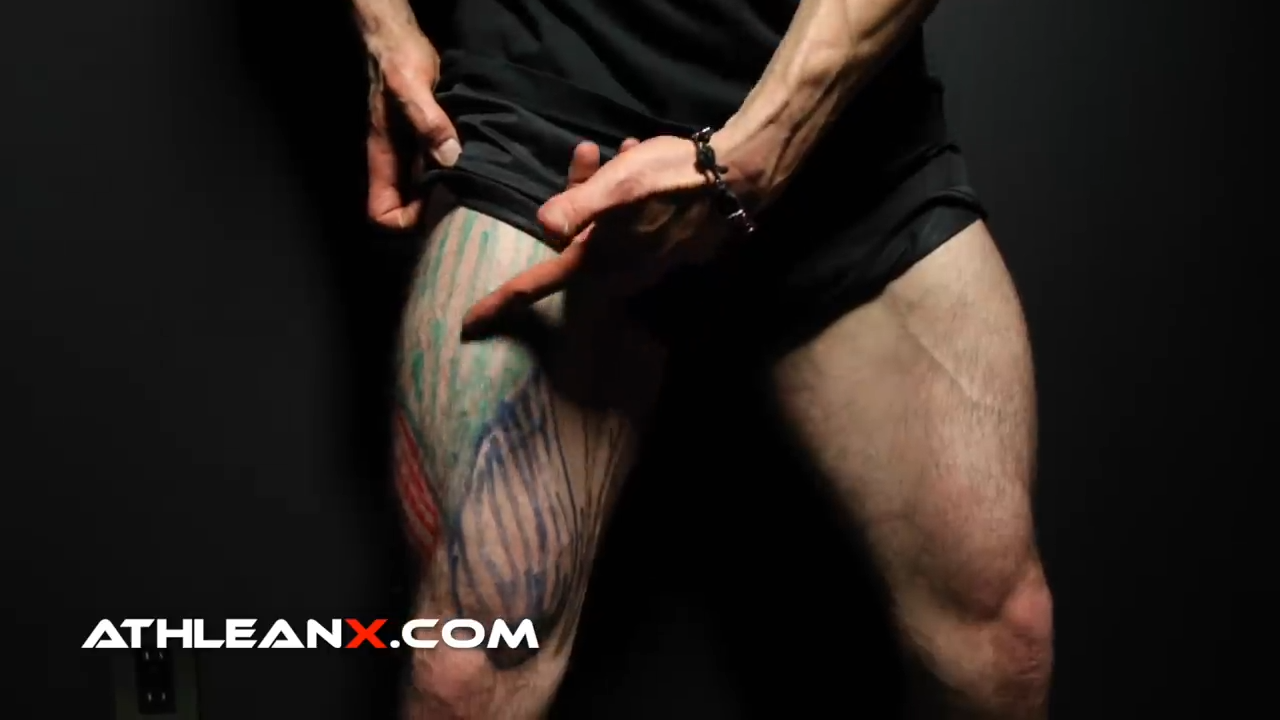
This is the quadriceps’ thin head. It’s located in between the medialis and lateralis muscles and runs from just below your hip joint to just above your knee.
VASTUS LATERALIS

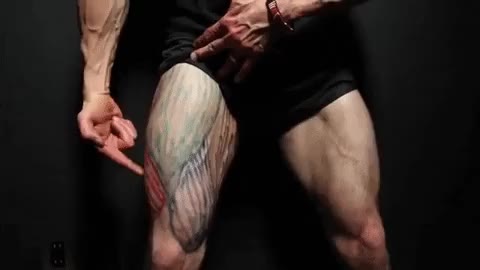
This is the quadriceps’ wide head. It’s located on the outside of your upper leg, running from just below your hip joint to just above your knee. It also assists with knee extension.
RECTUS FEMORIS

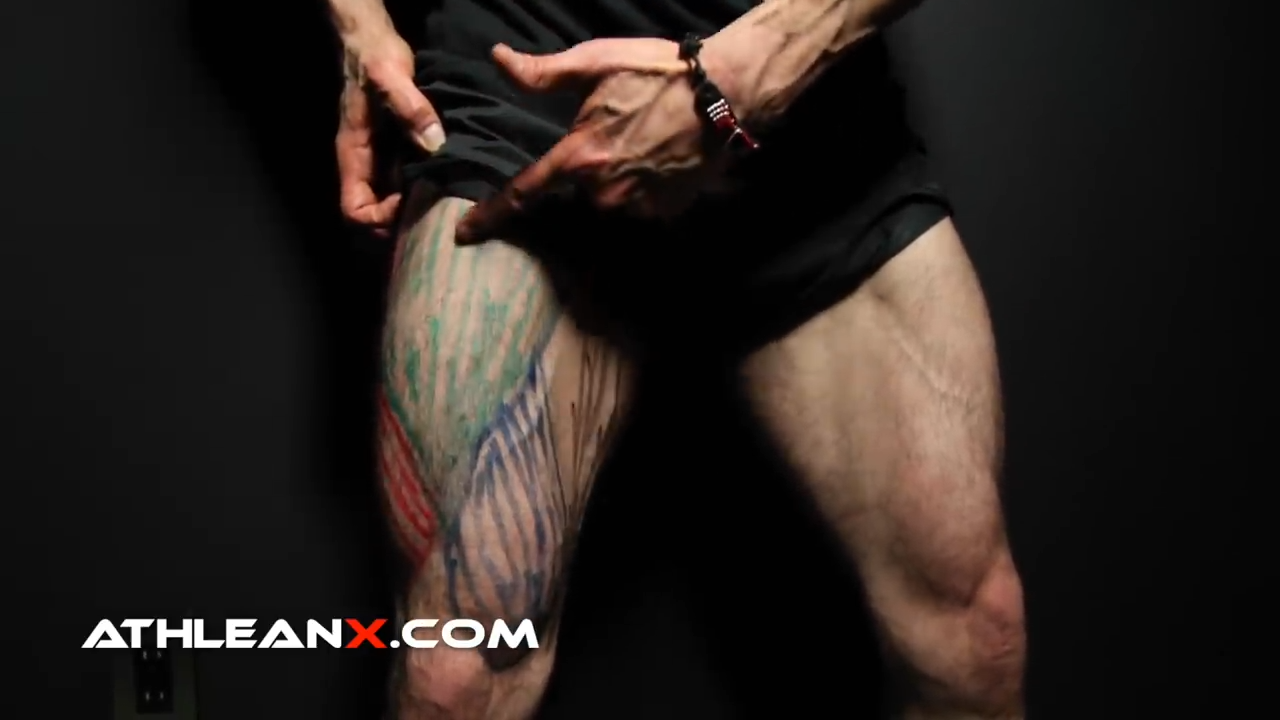
This is the quadriceps’ flat head. It’s located on the front of your thigh, running from just below your hip joint to just above your knee.
It’s important to note that the hamstring muscles, when correctly activated and trained, can help improve the strength and function of the quadriceps muscles as well.
THE ADDUCTORS
The adductor muscles are often overlooked, but they’re actually quite important. These muscles can be found on the inner thighs.
ADDUCTORS

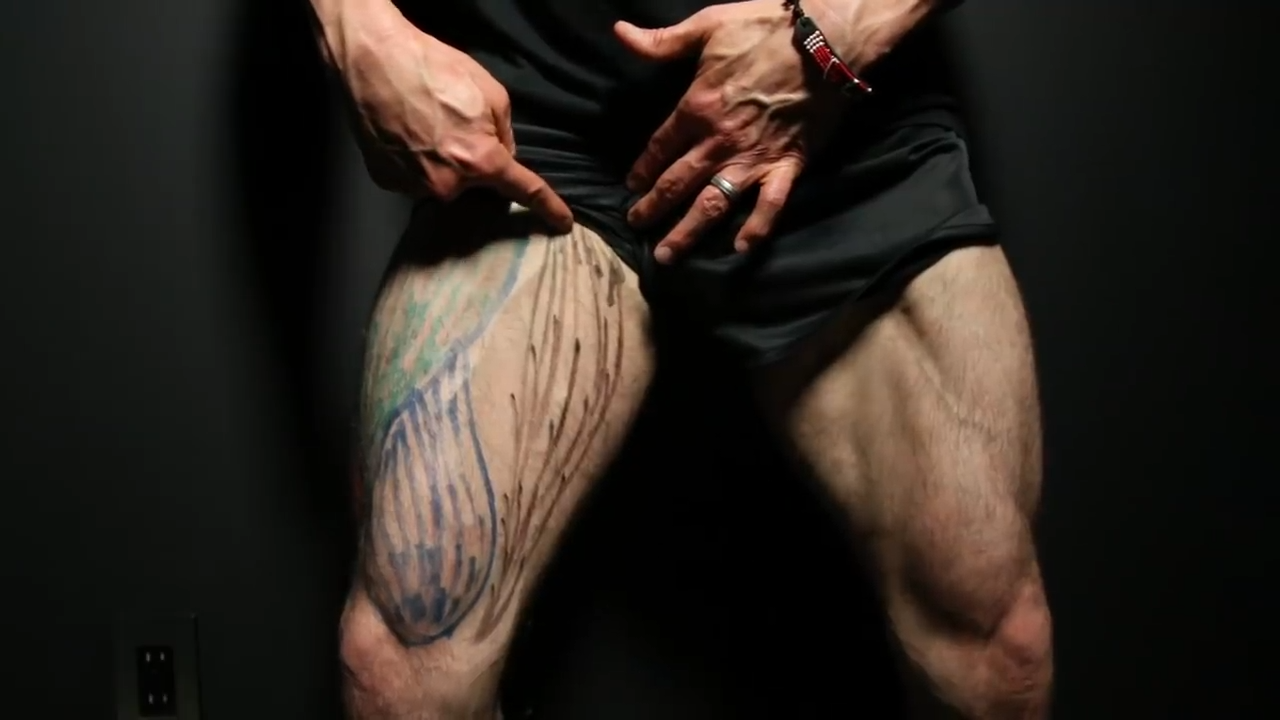
The adductors are a set of muscles located on the inner thighs. They assist with moves such as rotation and knee flexors.
THE ABDUCTORS
Opposite the adductors, you’ll find the abductors on the outside of your legs.
ABDUCTORS
Most people neglect their abductor muscles, which is a mistake because these muscles are responsible for moving your legs outward and stabilizing them during single-leg exercises.
THE CALVES
Finally, we get to the bottom of the leg with the calves. There are two parts to the calf muscle: the Gastrocnemius and the Soleus.
GASTROCNEMIUS
The Gastrocnemius is the larger part of the calf, and the main part that most people associate with big calves.
But there’s a big catch here.
You need the soleus just as much if you want to build three-dimensional calves. I’ll explain more below.
The Gastrocnemius helps with leg flexion at the knee and plantar flexion at the foot.
SOLEUS
The soleus muscle is located behind the gastrocnemius. While the latter gets more attention because it’s the bigger part of the calf, it would not be possible without the former.
The upper part of the soleus muscle fiber is located behind the gastrocnemius. By enlarging the size of the soleus, you will cause the gastroc to protrude outward. And this will make the entire calf look larger and more developed.
2) THE PROBLEM WITH HAMSTRING CURLS
Although the prone leg curl machine strengthens the muscles that bend the knee and activate hamstrings, this is not how these muscles work in real life.
Many people don’t realize that when you’re engaging in any physical activity where you are mostly on your feet, like many sports, the hamstrings’ main function is to extend the knee – NOT bend the knee.
What’s more, when you’re standing, the hamstrings actually decelerate knee bending and ensure the knee is straight, which might be counterintuitive to everything you’ve believed about the leg muscles.
When you train using a workout that teaches the hamstrings how to bend, the knee you’re actually setting yourself up for an injury to the very same muscle you were trying to prevent that in.
This is why the bulk of your hamstring workouts should not rely on the seated leg curl or lying hamstring curl machine. Instead, use the hamstring exercises I’ve listed below.
Speaking of the hamstring strength exercises in this article, you’ll notice one more thing about them: the glutes play an important role.
THE ROLE OF GLUTES IN HAMSTRINGS WORKOUTS
The hamstring muscles and the glutes are like two peas in a pod.
When you’re standing, the hamstring muscles work in tandem with the gluteal muscles to extend and stabilize your hip.
Therefore, for optimal hamstring strength and performance, it’s important that both of these muscle groups remain strong and well-connected.
This is why you’ll see a crossover in the following hamstrings workouts with glute exercises, or the glutes will be working together with the hamstrings in the “hamstrings-focused” exercises.
Take for example, hip hinge exercises like the standing variations of the Dumbbell Deadlift. If you perform a Stiff Leg Deadlift, then you getting hamstring activation more than the glutes, but the glutes are still being utilized.
But if you were to perform Romanian Deadlifts, which involves a slight bend in the knee, then you’ll get a little more glute activation.
Both Stiff-Legged Deadlifts and Romanian Deadlifts activate the hamstring muscles and glute muscles, but it all depends on the angle and bend of the knees to emphasize one over the other.
3) BENEFITS OF WORKING OUT THE HAMSTRINGS
Just one more thing about the importance of the hamstrings before I deliver the best hamstrings workout.
Quads steal the show most of the time given they are on the front of our bodies and look amazing when you achieve quad separation. But it’s just as important to focus on the hamstrings and here’s why:
MORE STRENGTH
Exercising your hamstring muscles will help you build more strength in the back of your legs. This can be a great way to improve your performance in any sport or activity, as well as helping with mobility and balance.
IMPRESSIVE MUSCLE GROWTH
By performing hamstring workouts regularly, you can improve the size of your hamstring muscles and make them more prominent. This will give your legs a well-defined look that is sure to turn heads.
BETTER OVERALL PERFORMANCE
Strong hamstring muscles make it easier to perform a variety of athletic performance activities such as running, jumping, and sprinting.
INCREASED BALANCE
Hamstring exercises can help you maintain balance while walking or performing other motions which involve your leg muscles.
REDUCED RISK OF INJURY
By strengthening the hamstring muscles, you reduce the risk of hamstring injuries, tears, or hamstring strains in the gym and your everyday life. Strong hamstrings can also help prevent other lower body injuries such as knee injuries.
4) BEST HAMSTRING EXERCISES
Now that you understand why training hamstrings is so important, let’s look at some of the best hamstring exercises to include in your workout.
If you already have a leg workout, you can simply swap out your current hamstring exercises for some of the hamstring builders below. The following exercises require basic equipment. If there’s a piece of equipment you don’t have, you can always substitute, usually with an exercise band or dumbbell.
SWISS BALL ROLL-OUTS

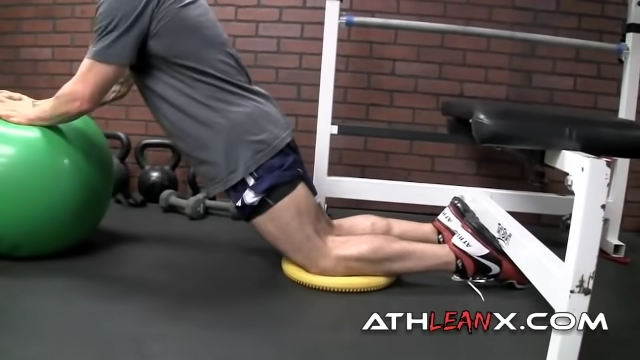
HOW TO DO SWISS BALL ROLLOUTS:
- For this exercise for hamstrings, tart in a kneeling position on the floor with your feet tucked under a stable surface, knees on an exercise mat.
- Make sure the anchor foot is secure since you’ll be moving your weight forward. Place your hands atop a Swiss ball or stability ball.
- Take a deep breath, tighten the core, and engage your hamstring muscles then slowly roll the exercise ball forward guiding with your forearms.
- Pause once you are completely extended, and then use your hamstrings to pull you back up.
- Keep your core tight during the entire movement.
WHAT MAKES IT EFFECTIVE: You must use your hamstrings to both move forward and pull yourself back up, maximizing the time under tension in this isolation exercise. This stability ball hamstring curl is also going to help with aerobic performance. This one may be my favorite hamstring exercise because it is so easy to do and can even be done at home by anchoring your foot under a piece of furniture.
DECEL LEG SWINGS

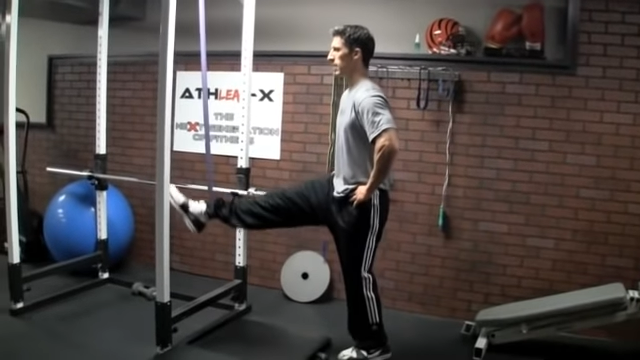
HOW TO DO DECEL LEG SWINGS:
- For this resistance band hamstring exercise, secure a resistance band on a power rack or stable surface.
- Place your foot in the exercise band and keeping the leg straight, use your hamstring muscle to pull the exercise band in a downward motion.
- Now, slowly return to the starting position in an upward motion, focusing on the contraction of the hamstrings.
WHAT MAKES IT EFFECTIVE: The focus on the eccentric portion will help to strengthen the hamstrings muscle while improving function and control. The band provides constant tension through the entire range of motion.
THREE-WAY ROMANIAN DEADLIFTS

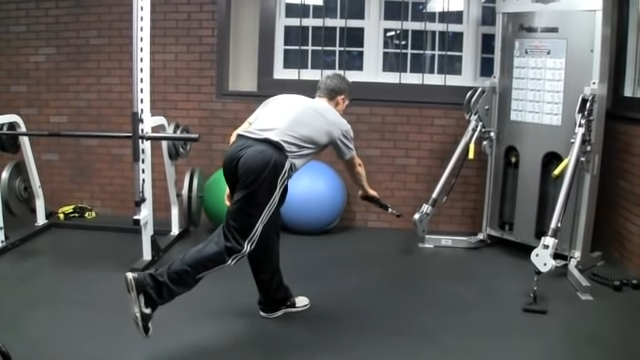
HOW TO DO THREE-WAY ROMANIAN DEADLIFTS:
- For this effective hamstring exercise, start with your feet hip-width apart and a cable machine pulley handle in one hand.
- Bring one leg up, standing on the other leg with a soft knee bend.
- Keeping your back straight, hinge at the hips while lowering the weight towards the floor until you feel a slight hamstring stretch.
- Return to starting position and repeat on the inside and outside of the body. That’s one round.
WHAT MAKES IT EFFECTIVE: You challenge and improve the stability and balance of your lower body while strengthening the hamstrings and glutes. Also, working the hamstrings unilaterally in this hinge movement helps eliminate any muscle imbalance you may have from one leg to the other.
PHYSIOBALL CIRCLE CURLS

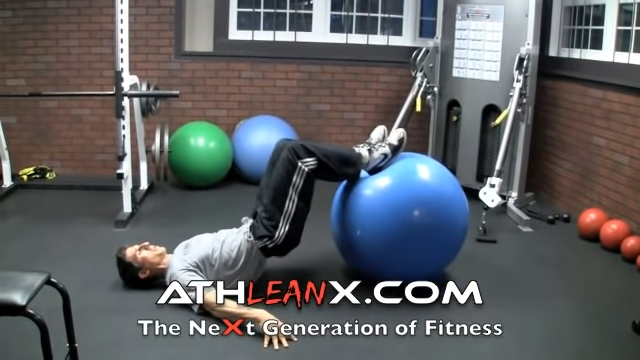
HOW TO DO PHYSIOBALL CIRCLE CURLS:
- Lie on your back with your feet flat on a Swiss ball or stability ball and your arms at your sides.
- Raise your hips off the floor, squeezing your glutes as you lift them. Your body should be in a straight line from shoulders to knees.
- Bend at the knee and roll the Swiss ball toward you in a circular motion.
- Perform the same number of reps going clockwise as counterclockwise.
WHAT MAKES IT EFFECTIVE: This challenging hamstring exercise targets the muscle from multiple directions while forcing the glutes to stay in a flexed position.
ASSISTED HAMSTRING / GLUTE RAISE

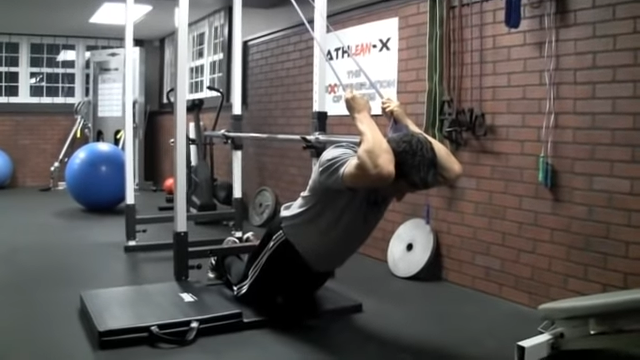
HOW TO DO THE ASSISTED GLUTE HAM RAISE:
- For this glute ham raise exercise for hamstrings, attach a resistance band above you – a power rack works great here but any sturdy object will do.
- Kneel on the ground and secure your feet under the rack or stable surface. Hold the resistance band above your head.
- Slowly lower yourself forward in a downward motion while keeping a straight body and tight core.
- Engage your hamstring and glute muscles to pull yourself back in an upward motion.
- Keep your core tight during the entire movement and use proper form to avoid knee pain or risk of injury.
WHAT MAKES IT EFFECTIVE: This glute-hamstring raise works both deceleration and acceleration, ensuring the muscles are fighting to lower and raise your body back up.
DUMBBELL REVERSE SPRINTER LUNGE

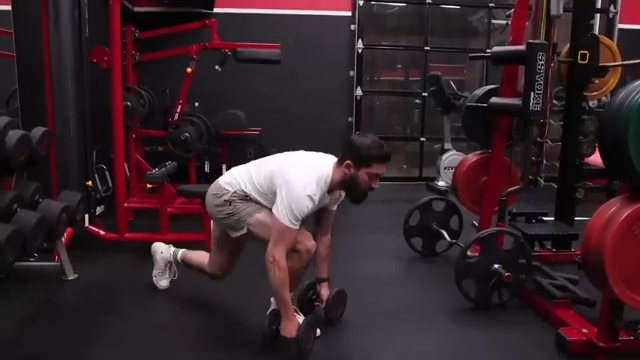
HOW TO DO THE DUMBBELL REVERSE SPRINTER LUNGE:
- Hold a pair of dumbbells and stand up tall with feet flat on the floor.
- Take a step backward into lunge position and as you do so, lean forward so that your chest is almost touching your thighs.
- Contract the hamstrings and glutes to bring yourself back to the standing starting position.
WHAT MAKES IT EFFECTIVE: This one might remind you of the Bulgarian split squat, but this isn’t a body weight squat. Rather, with the one leg behind you, you’re neutralizing the pelvis a little and relieving some of that excessive posterior tilt, which makes this exercise a lot safer. It’s also great if you have prior knee issues.
STANDING CUFF KICKBACKS

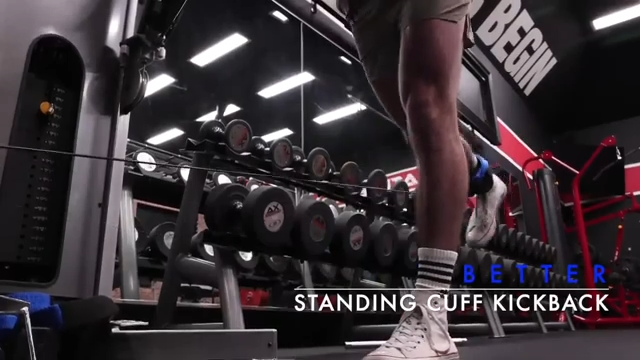
HOW TO DO STANDING CUFF KICKBACKS:
- Here’s an exercise you can do using your ankles with equipment. Take an ankle cuff, attach it to a cable machine, and put it around one of your ankles.
- Maintain a strong posture as you kick back against the resistance.
- Slowly, return to the starting position.
WHAT MAKES IT EFFECTIVE: This exercise provides key resistance to ensure overload that can create muscle growth. If you want to build muscle, be sure to take your time with the reps, giving yourself about a minute to complete one set. Lighter weight works well here but be sure to use secure straps for your ankles regardless of the weight load. If you notice ankle tightness before the exercise, go through some basic ankle stretches such as Ankle Circles and Standing Heel Lifts.
DUMBBELL SINGLE-LEG DEADLIFT

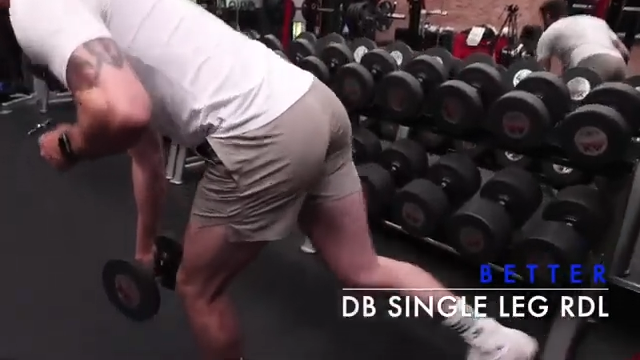
HOW TO DO THE DUMBBELL SINGLE-LEG DEADLIFT:
- Stand with your feet hip-width apart and hold a dumbbell in each hand.
- With one foot slightly off the ground, slowly hip hinge and lower the weight toward the floor with a soft bend in the knee.
- Keep your back flat and chest up as you sink into the movement.
- When you reach full hamstring stretch, pause for two seconds before pushing up to starting position.
WHAT MAKES IT EFFECTIVE: You’re allowing your chest to contribute in a way that actually helps to take it out of the action while allowing the shoulders and the front delts, more specifically, to do the work.
CABLE SINGLE-LEG ROMANIAN DEADLIFT

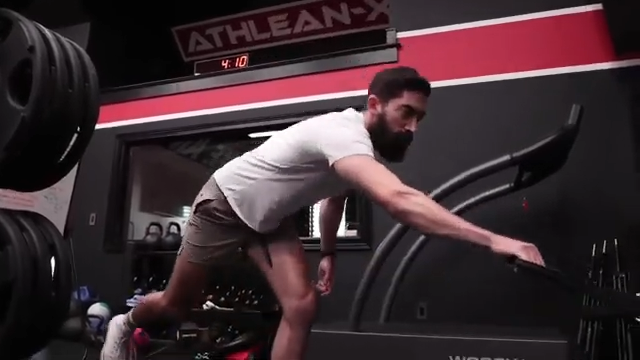
HOW TO DO THE CABLE SINGLE-LEG ROMANIAN DEADLIFT:
- For this single-leg RDL, stand with your feet hip-width apart and hold a cable pulley handle in each hand. Make sure the pulley is on the low placement setting.
- With one foot slightly off the ground, slowly bend your hips and lower the weight toward the floor.
- Keep your back flat and chest up as you sink into the movement.
- When you reach full hamstring stretch, pause for two seconds before pushing up to starting position.
- Use proper form and core strength during this exercise because poor form increases your injury risk.
WHAT MAKES IT EFFECTIVE: You’re allowing your chest to contribute in a way that actually helps to take it out of the action while allowing the shoulders and the front delts, more specifically, to do the work.
Guys, if you’ve been trying to grow your hamstrings using the hamstrings curl machine, it’s time to upgrade your workout.
The machine leg curl isn’t going to help you build stronger and more muscular hamstrings, but the hamstrings exercises mentioned above can! Most importantly, they can easily be incorporated into your current workout. Simply swap those curls for one or two of the exercises listed above.
Don’t have a lower-body workout yet? We can help! Check out our ATHLEAN-X programs to see which one best meets your goals and fitness level.
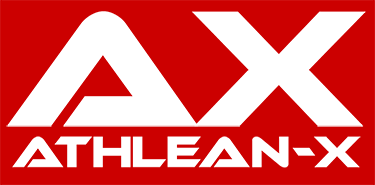
- Hamstrings are just as important for building strong and head-turning legs as the quadriceps, but if you’re still relying on hamstring curls, you’re cheating yourself.
- It’s important to note as you look for those perfect hamstring workouts that most hamstring exercises will include glute activation as the two must work together. With that said, here are some exercises to try:
- Swiss Ball Rollouts are great because the exercise ball requires you to use your hamstrings to both move forward and pull yourself back up.
- Decel Leg Swings ensure that you’re focused on the eccentric portion, and this will help to strengthen while improving neuromuscular control.
- Three-Way Romanian Deadlifts allow you to challenge and improve stability and balance along with strength.
- Physioball Circle Curls keep the muscles contracted the entire time in multiple directions.
- Assisted Hamstring / Glute Raises work both deceleration and acceleration.
- Dumbbell Reverse Sprinter Lunges help to neutralize the pelvis making it safer for your hips and knees.
- Standing Cuff Kickbacks provide you with the resistance you need for hypertrophy.
- Dumbbell Single-Leg Deadlifts give you the option to focus on hamstrings or glutes depending on the straightness of your knees.
HAMSTRING WORKOUTS FAQS
One of the best exercises for hamstrings for building strength is the Glute-Ham Raise or Swiss Ball Rollouts. Swiss Ball Rollouts are very similar to a glute-ham raise but has the benefit of being able to be done at home with minimal equipment. Be sure to perform any hamstring mobility exercises or other dynamic warmups to get your body warm before training the hamstrings to prevent hamstring strains or other injuries. Be sure to include this exercise in all of your lower body workout routines.
Three of the best exercises for hamstrings are Three-Way Romanian Deadlifts, Standing Cuff Kickbacks and the Assisted Glute Ham Raise. These strength training exercises will help you build stronger hamstring muscles. Be sure to perform any hamstring mobility exercises or other dynamic warmups to get your body warm before training the hamstrings.
The benefits of strength training hamstrings include increased strength in the back of the legs which translates over to any athletic activity, well-defined legs, increased balance and reduced risk of injury.
If you have weak hamstring muscles, you could suffer injuries more easily and won't have the strength to support your other training goals at the gym.
REFERENCES
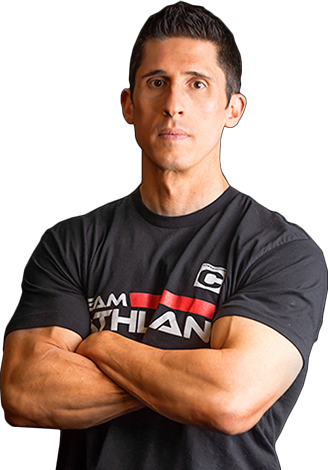
Jeff Cavaliere M.S.P.T, CSCS
Jeff Cavaliere is a Physical Therapist, Strength Coach and creator of the ATHLEAN-X Training Programs and ATHLEAN-Rx Supplements. He has a Masters in Physical Therapy (MSPT) and has worked as Head Physical Therapist for the New York Mets, as well as training many elite professional athletes in Major League Baseball, NFL, MMA and professional wrestling. His programs produce “next level” achievements in muscle size, strength and performance for professional athletes and anyone looking to build a muscular athletic physique.
